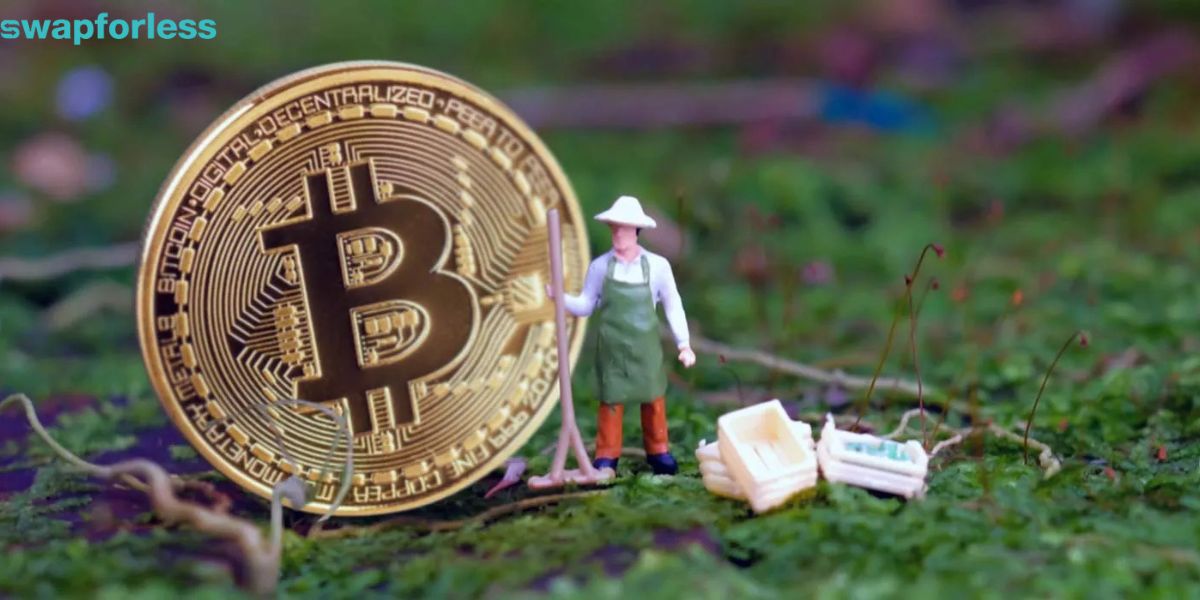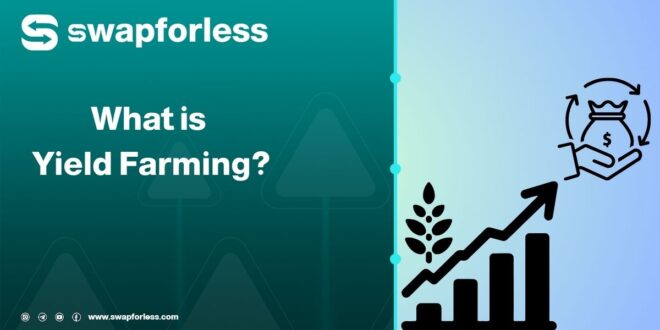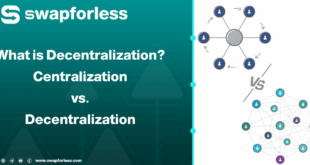No longer are cryptocurrencies just tools for storing value or payment instruments; they have also become part of a new financial system, known as Decentralized Finance, or DeFi.
It offers new means through which one may earn a profit, one being a phenomenon known as Yield Farming. But what is Yield Farming, and how do you earn additional income with cryptocurrencies?
Don’t worry if you are a beginner with this term; we will walk you through a step-by-step process on how this mechanism functions, from the basic terminologies, employed protocols, and step-by-step procedures on how you can get started. We will explain everything simply and straightforwardly, even if you do not have technical skills. We will begin!
What is Yield Farming?

Yield Farming, also known as Yield Cultivation, is a process where money is earned through supplying liquidity (in terms of cryptocurrencies) for technology-based projects in the DeFi sector. Think about this: you have digital currencies, and you invest them into a specific project for rewards or advantages.
Unlike traditional banks, which involve intermediaries, Yield Farming is automated through blockchain technology and smart contracts. That is, you don’t have an intermediary controlling your money; everything is automated and transparent.
It’s called “farming” because the idea is similar to planting seeds. You plant seeds and look for a harvest after a time frame. Similarly, when you provide your digital currencies as liquidity, you are looking for a “harvest” of returns or rewards.
So how does this mechanism work, anyway? What are some of the terms you need to know before you get started? Let’s see.
What is DeFi: Decentralized Finance in Crypto 2025
How Does Yield Farming Work?

To understand how Yield Farming works, we need to look at the fundamental processes involved. Yield Farming is not just a single idea; it’s a multi-step process that includes providing liquidity, using smart contracts, and earning rewards. Let’s break down each step with examples:
Providing Liquidity:
When you decide to participate in Yield Farming, the first thing you need to do is provide liquidity. But what does that mean? If you own digital currencies like Ethereum and USDT, you can provide these tokens as a “liquidity pair” in a decentralized protocol like Uniswap.
Once you provide liquidity, you become part of the trading market. This means that people who trade benefit from the liquidity you’ve provided, and they pay fees for it.
Smart contracts are programs that execute automatically when certain conditions are met. In Yield Farming, smart contracts are used to ensure rewards are distributed fairly and transparently.
For example, if you contributed 15% of the total liquidity to a liquidity pool, the smart contract will ensure you receive 15% of the total rewards. This process happens automatically without the need for intermediaries. (Reward percentages depend on the rules programmed into the smart contract.)
Rewards:
In return for all this, you earn rewards, usually in the form of Tokens issued by the protocol you’re interacting with. These tokens may have market value, meaning you’re generating real profits. Additionally, you will receive Liquidity Provider Tokens (LP Tokens), which represent your share in the liquidity pool.
For example, if you provided liquidity in a protocol like Compound, you might earn COMP tokens as a reward. You can sell these tokens or reinvest them to generate even more profits.
Key Terms Related to Yield Farming

Yield farming involves a set of technical terms that might seem complex at first but are simple once explained. Here are the most important terms you should know:
Liquidity Pools:
Liquidity pools are virtual funds that contain digital assets like cryptocurrencies. When you provide liquidity, you add your assets to these pools, allowing other users to trade using that liquidity.
For example, if you own ETH and USDT, you can provide them as liquidity pairs in Uniswap’s liquidity pool. Every transaction made using this liquidity incurs fees, which are distributed to liquidity providers as rewards.
Liquidity Provider Tokens (LP Tokens):
Once you provide liquidity to the pool, you receive tokens known as “LP Tokens.” These tokens represent your share in the liquidity pool and can later be used to reclaim your funds along with rewards.
For instance, if you provided $500 worth of liquidity to a pool valued at $5,000, you’d receive 10% of the total LP Tokens. If 1,000 LP Tokens were issued, you’d receive 100 LP Tokens.
When withdrawing your funds, you can use these tokens to recover your original assets plus your share of trading fees and additional rewards (if applicable).
Annual Percentage Rate (APR) and Annual Percentage Yield (APY):
- APR (Annual Percentage Rate): Refers to the yearly return rate without considering reinvestment.
- APY (Annual Percentage Yield): Takes reinvestment into account, making it higher than APR. For example, if the APR is 10%, the APY could be 12% if you reinvest your earnings.
Top Yield Farming Protocols
Yield Farming relies heavily on decentralized protocols that provide platforms for contributing liquidity and earning rewards. Here are some of the most popular protocols:
Uniswap:
Uniswap is a decentralized trading protocol that relies on liquidity pools. When you provide liquidity to Uniswap, you become part of the trading market and earn a share of trading fees as rewards. For example, if you provide ETH and USDT as a liquidity pair, you earn a portion of the trading fees charged on transactions involving that pair.
Aave:
Aave is a decentralized lending protocol that allows you to lend your funds to others or borrow against collateral. Whenever you lend your funds, you earn interest as a reward. For instance, if you borrow 100 DAI, you earn a 5% annual interest rate as a reward.
Compound:
Compound is similar to Aave but focuses more on variable interest rates. You can deposit your digital assets and earn daily or weekly rewards based on the current interest rate.
Curve Finance:
Curve Finance is a protocol specialized in trading stablecoins (like USDT and USDC). It offers low-price slippage and attractive rewards for participants in Yield Farming. If you own USDT and USDC, you can provide them as a liquidity pair in Curve and earn rewards.
How to Get Started with Yield Farming?

If you’re ready to dive into Yield Farming, here are the basic steps to get started:
- Choose a Secure Digital Wallet: You’ll need a wallet that supports cryptocurrencies, such as MetaMask or Trust Wallet. These wallets allow you to store and manage your digital currencies easily.
- Buy Cryptocurrencies: Purchase the cryptocurrencies you want to use for Yield Farming, such as ETH or USDT. You can buy these tokens on exchanges like Binance or Coinbase.
- Choose the Right Protocol: Research decentralized protocols that offer good opportunities for Yield Farming.
- Provide Liquidity: Deposit your cryptocurrencies into the liquidity pool of the protocol you’ve chosen.
- Earn LP Tokens and Reinvest Your Rewards: Once you provide liquidity, you’ll receive LP Tokens. You can reinvest these tokens to generate even more profits.
Staking 2025: Win from Staking and Increase your wallet
Challenges and Risks of Yield Farming
Despite the great opportunities Yield Farming offers, it’s not without its challenges and risks. Here are the main ones:
- Price Volatility: Cryptocurrencies are known for their extreme price fluctuations. If the value of the currency you invested in drops significantly, you could lose money even if you’re earning rewards.
- Impermanent Loss: Impermanent loss occurs when the value of the assets you’ve provided decreases compared to their initial value when you started investing. However, this loss can improve if prices return to their previous levels. On the other hand, it can turn into a permanent loss if liquidity is withdrawn at an unfavorable time.
- Security and Hacking Risks: Although blockchain is relatively secure, some protocols may still be vulnerable to hacks or programming errors.
- Withdrawing Liquidity: Withdrawing liquidity can sometimes be difficult, especially if liquidity pools are inactive or if there are withdrawal restrictions imposed by the protocol.
- Technical Complexity: For the average user, understanding how Yield Farming works and using it correctly can be challenging. Simple mistakes, such as sending funds to the wrong address or choosing an unreliable protocol, can lead to significant losses.
Conclusion: Is Yield Farming Right for You?
Yield Farming is perhaps one of the most exciting financial innovations within the crypto space. It offers real potential for making money, but not without challenges. You will have to have a solid understanding of tools and risks if you want to succeed here.
If you are interested in exploring this area, begin with understanding the basics and finding quality projects. You can invest small amounts initially to keep risks low and get a clear understanding of the mechanism before further investment.
If you find this area fascinating, investing in Yield Farming might be a great step worth exploring; keep in mind, however, that achievement calls for ongoing learning and judicious risk evaluation.
 swapforless blog
swapforless blog



